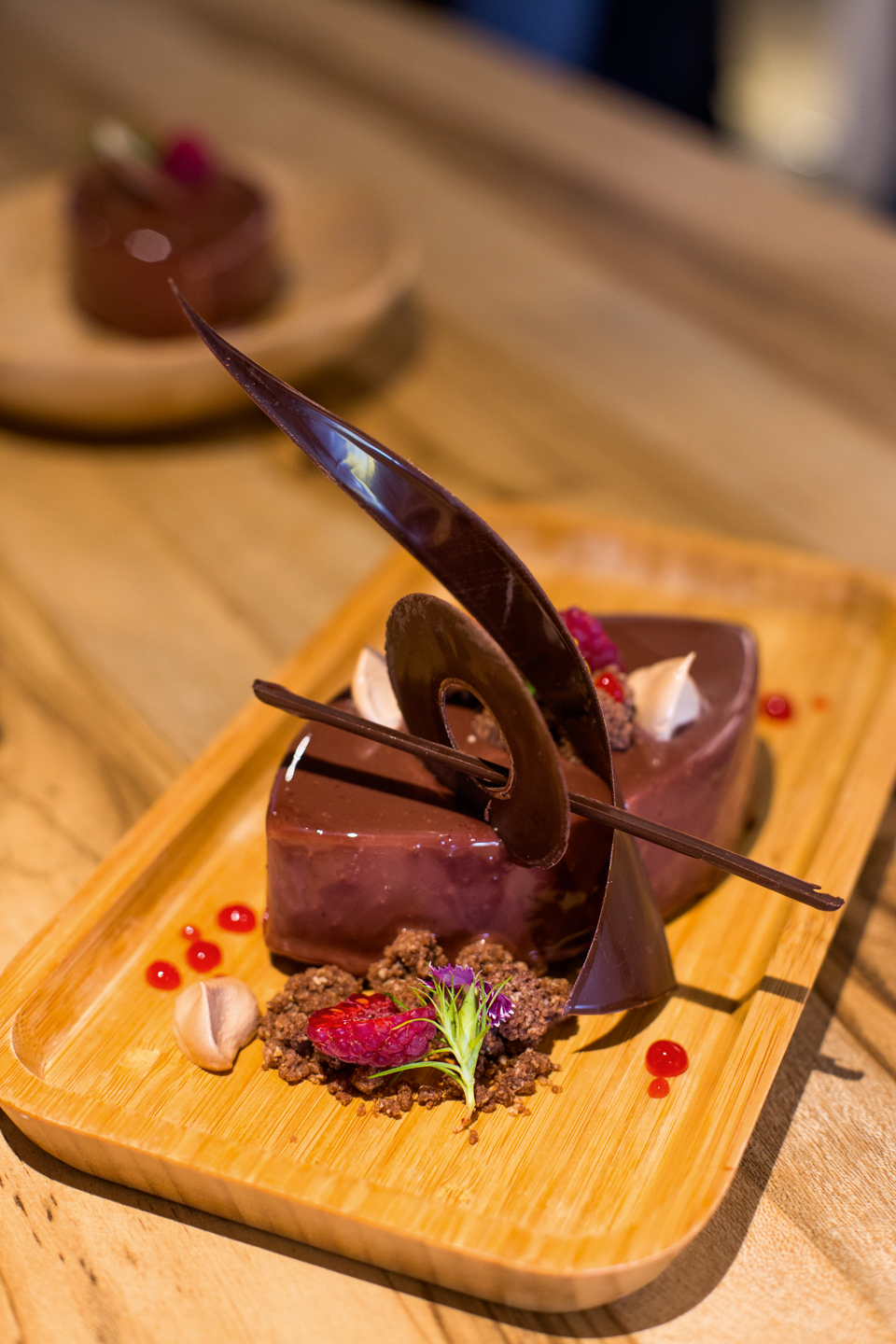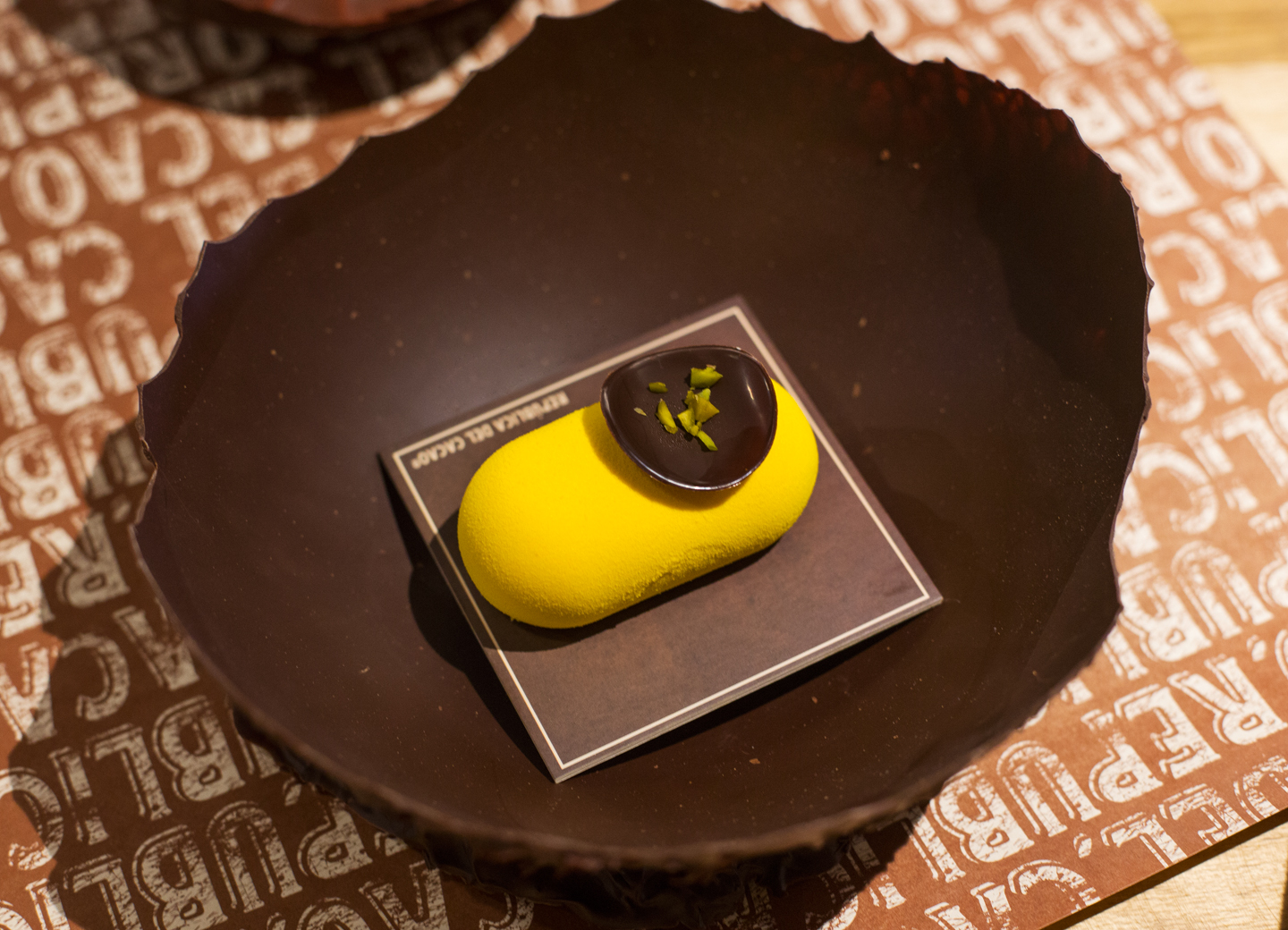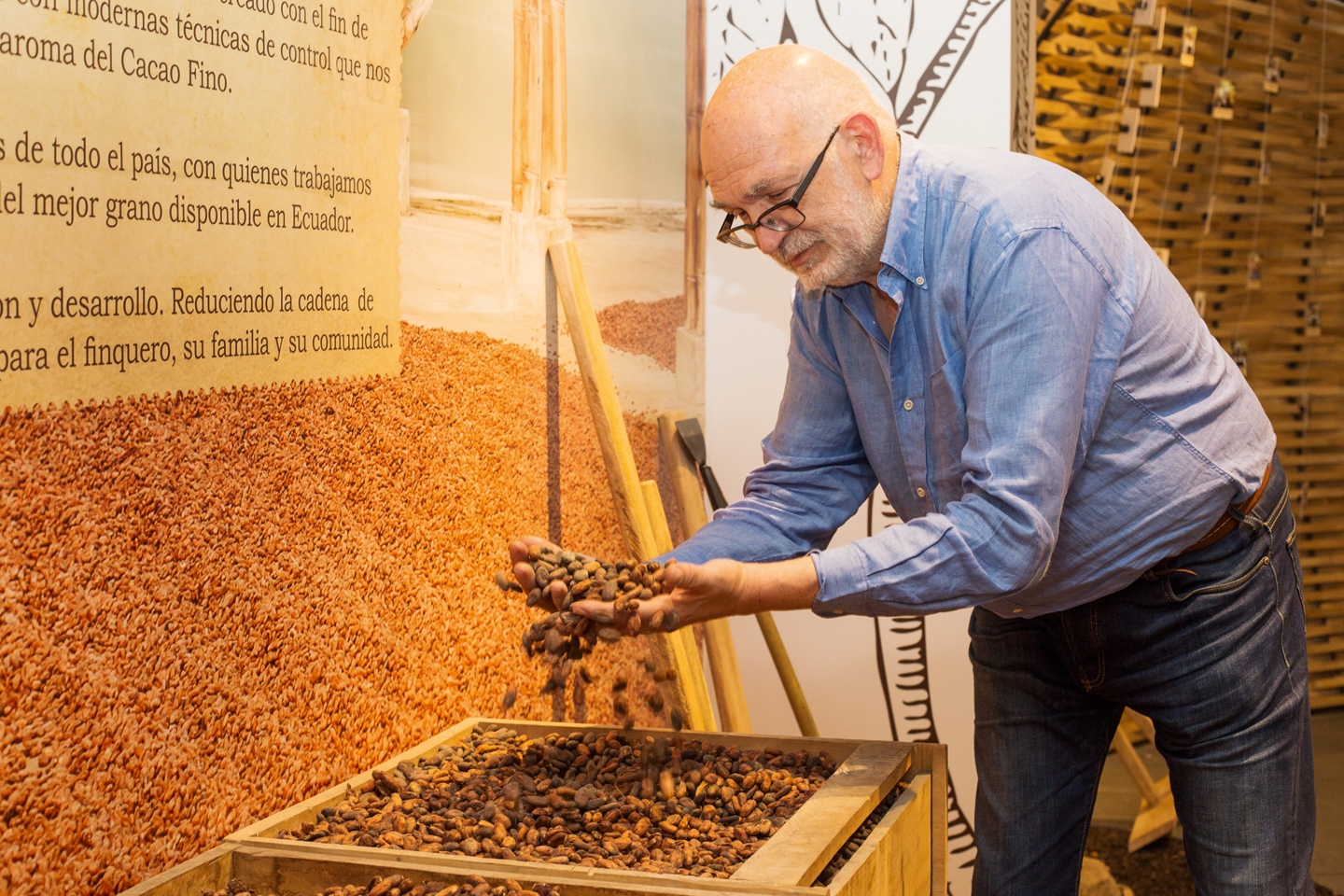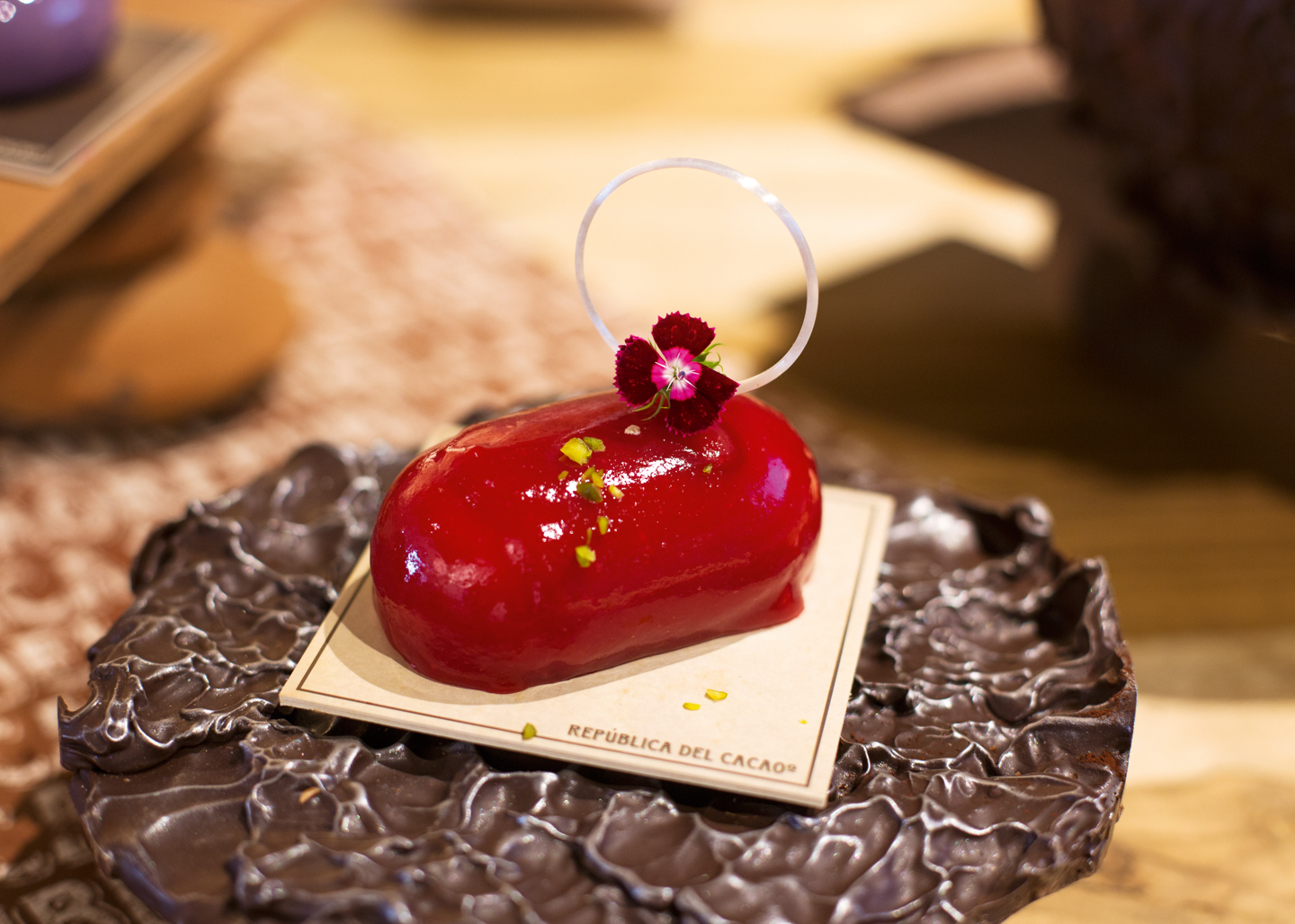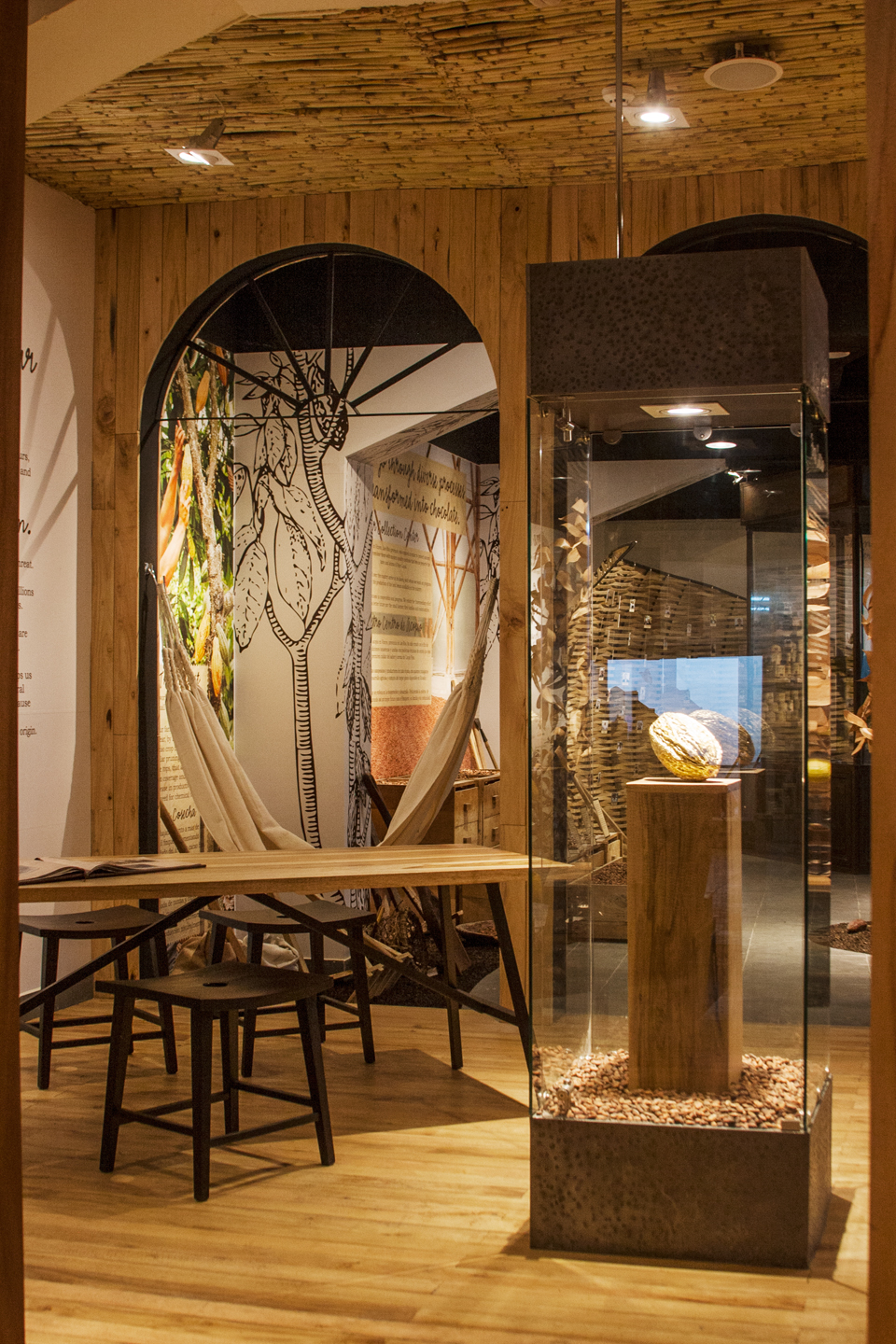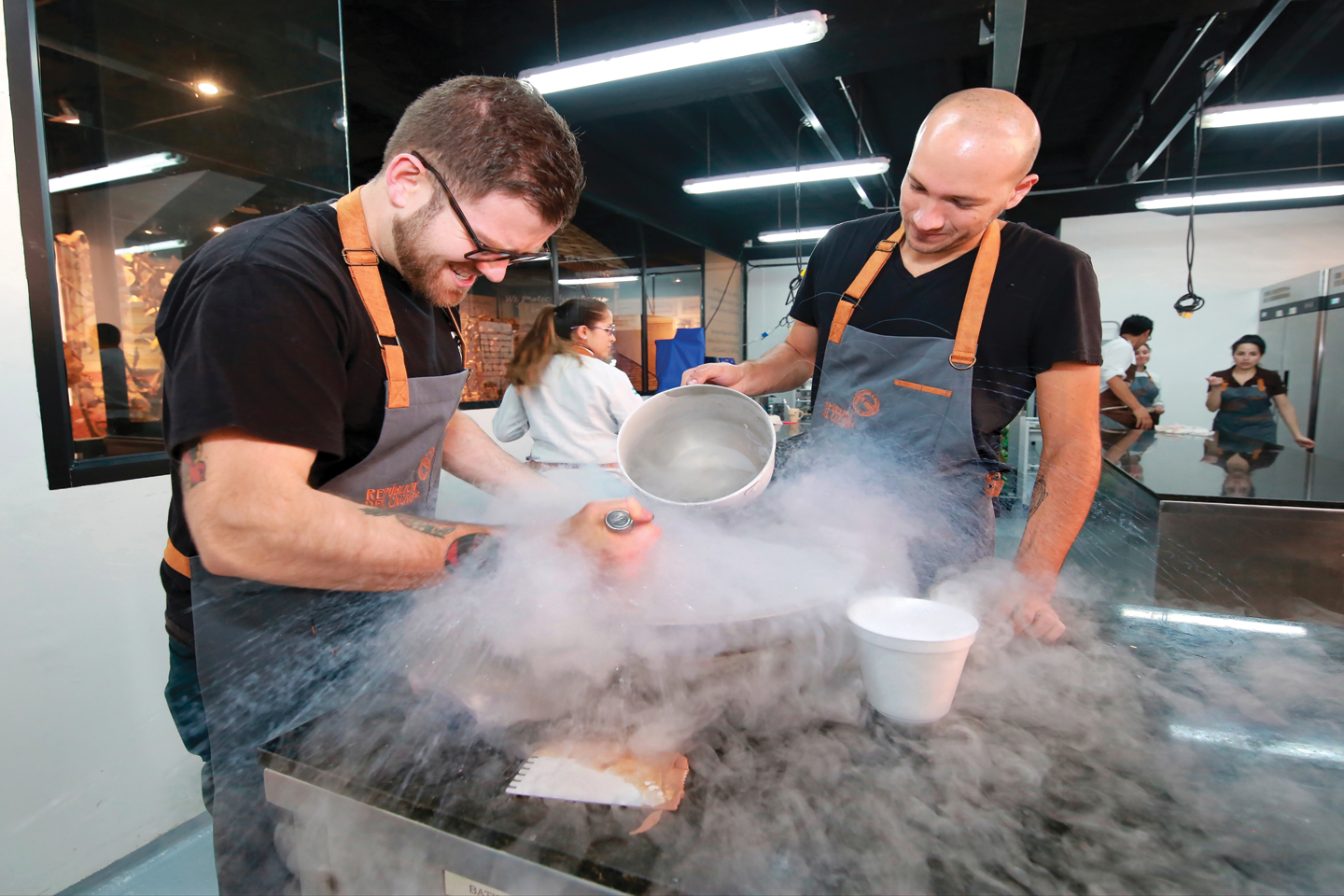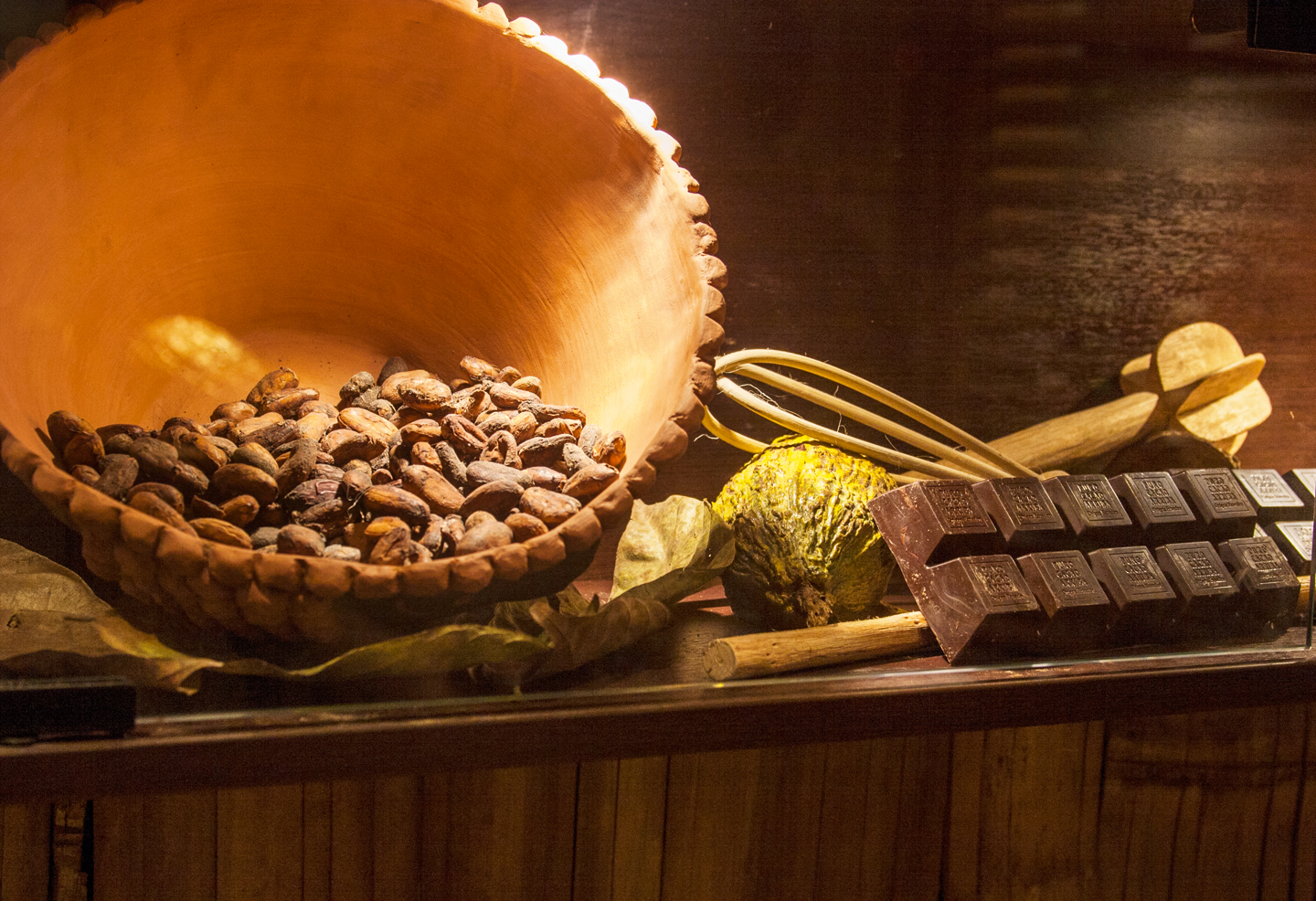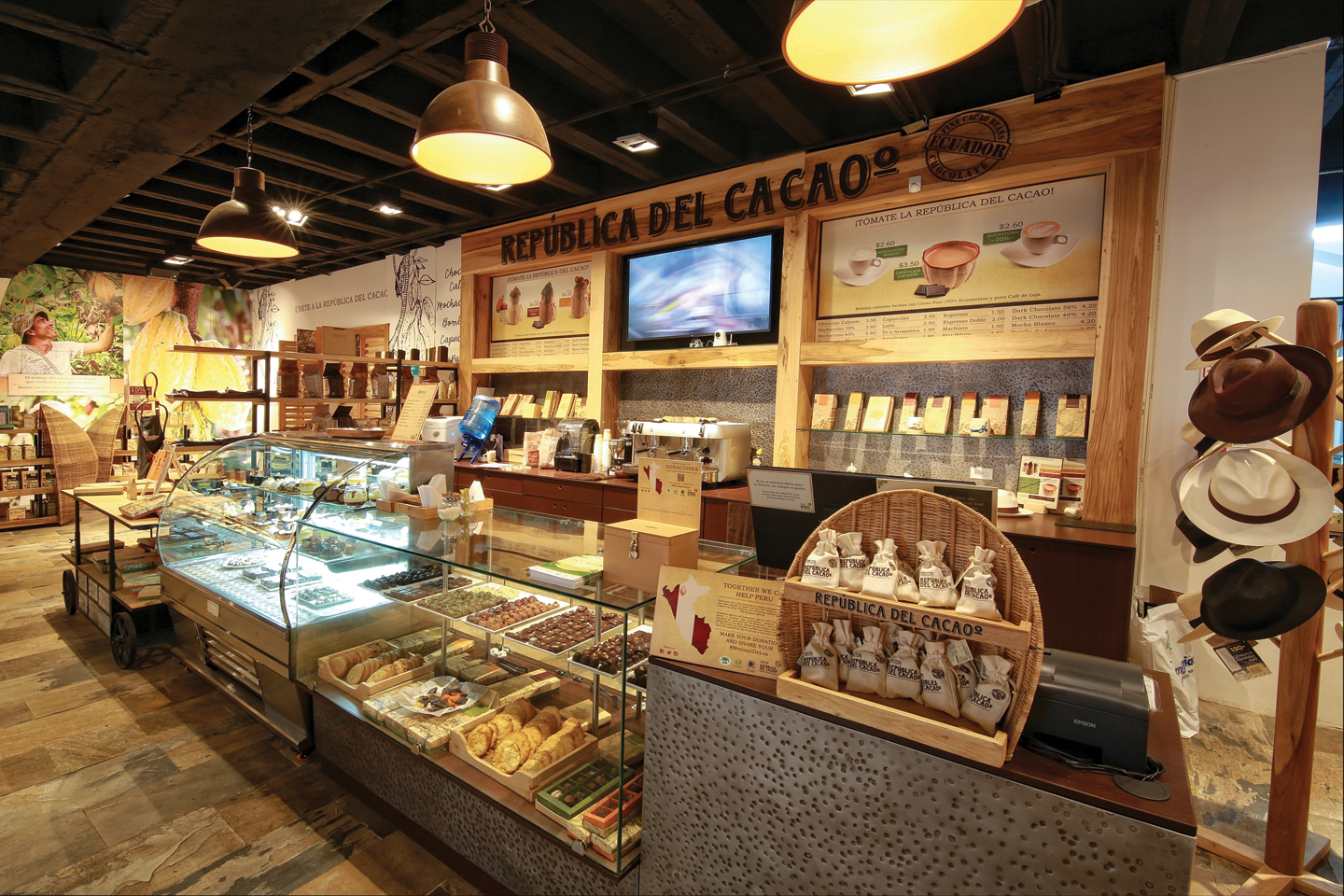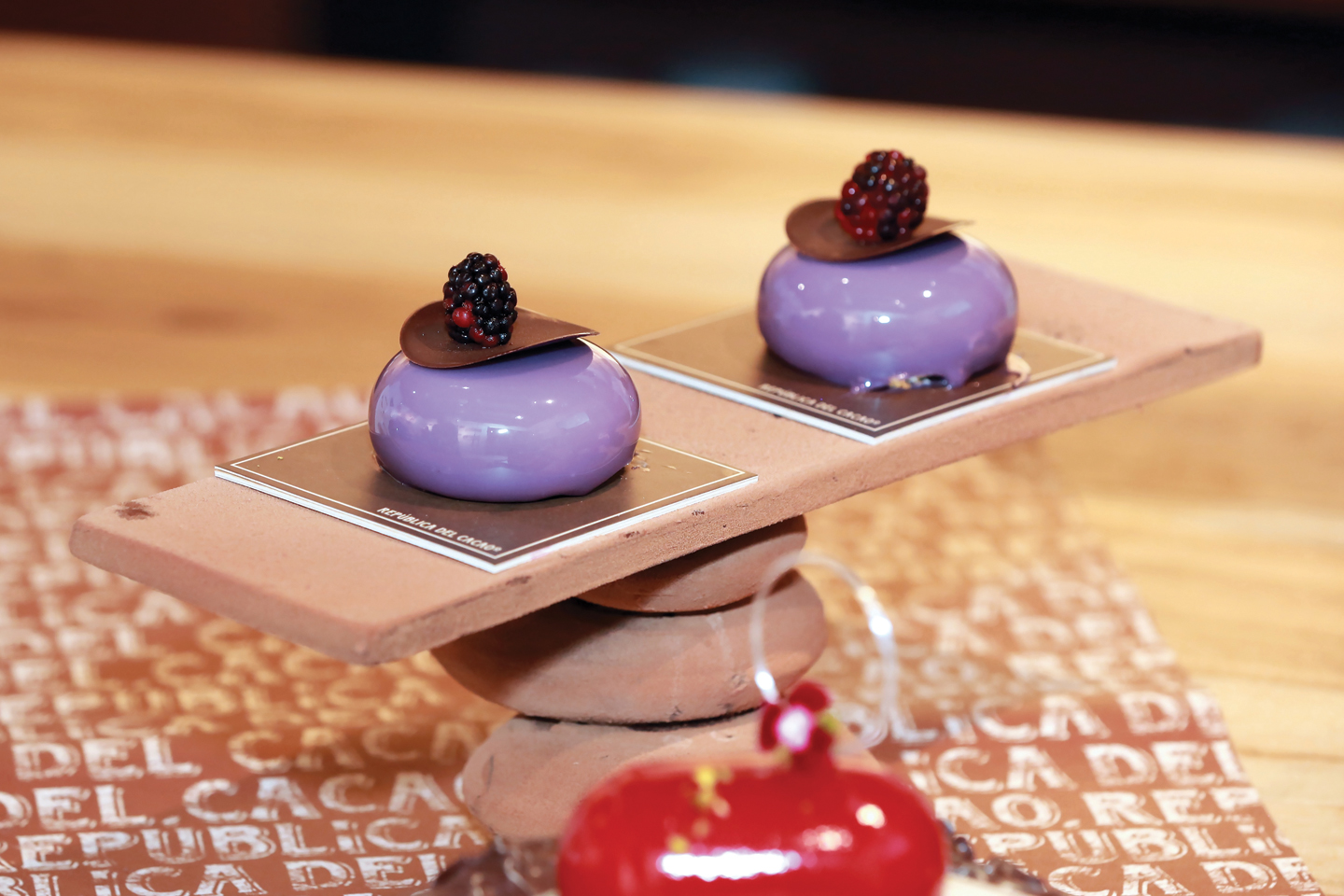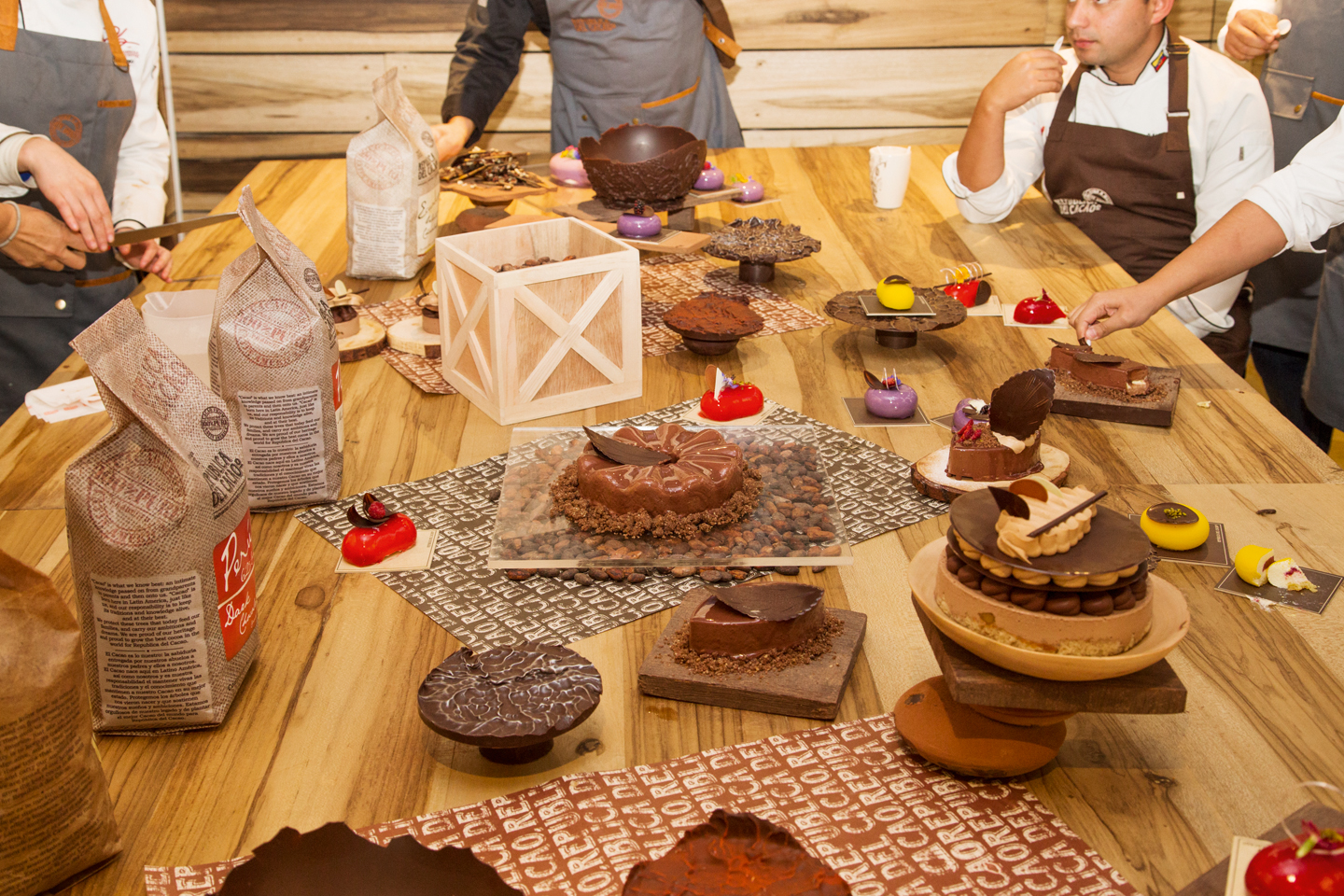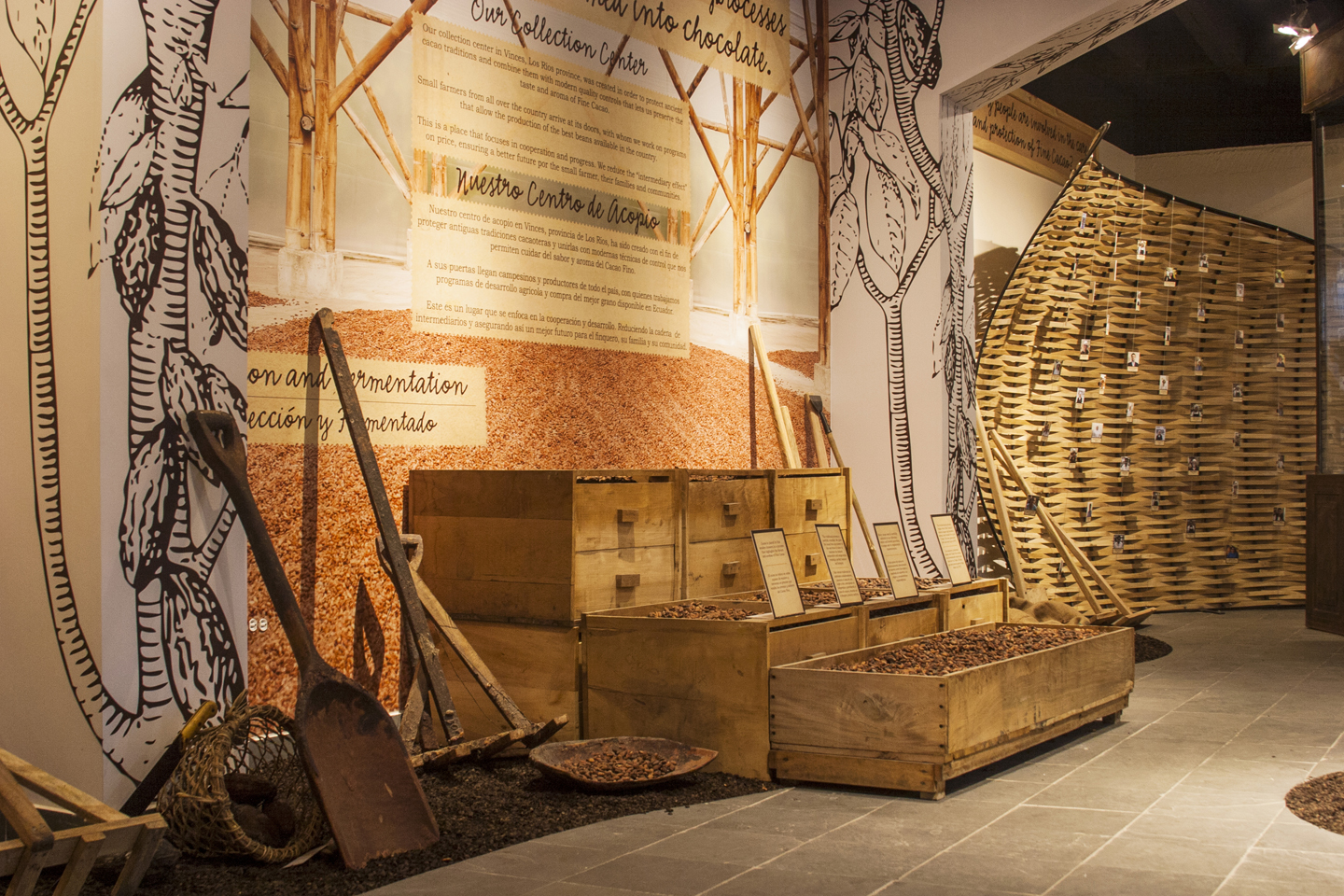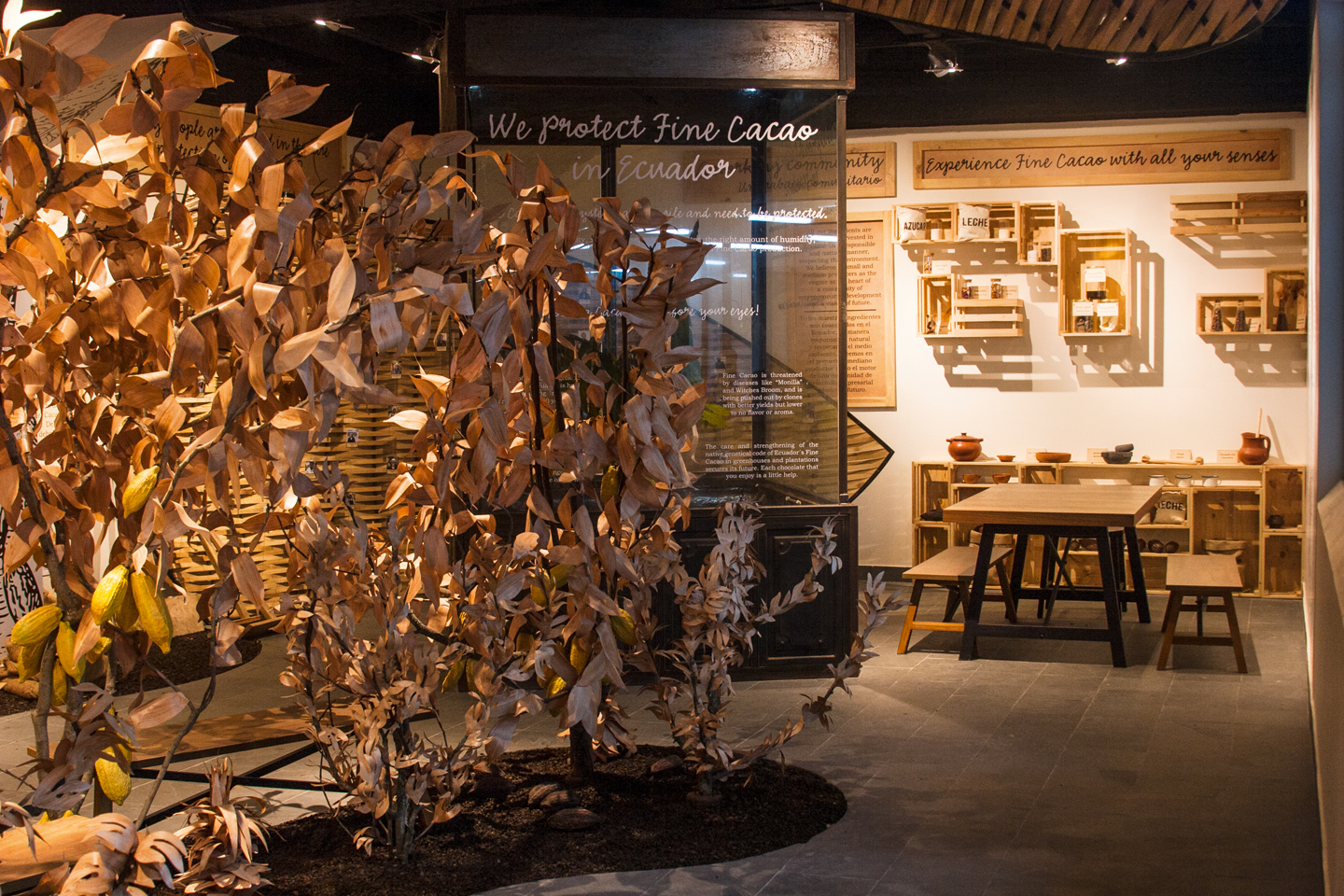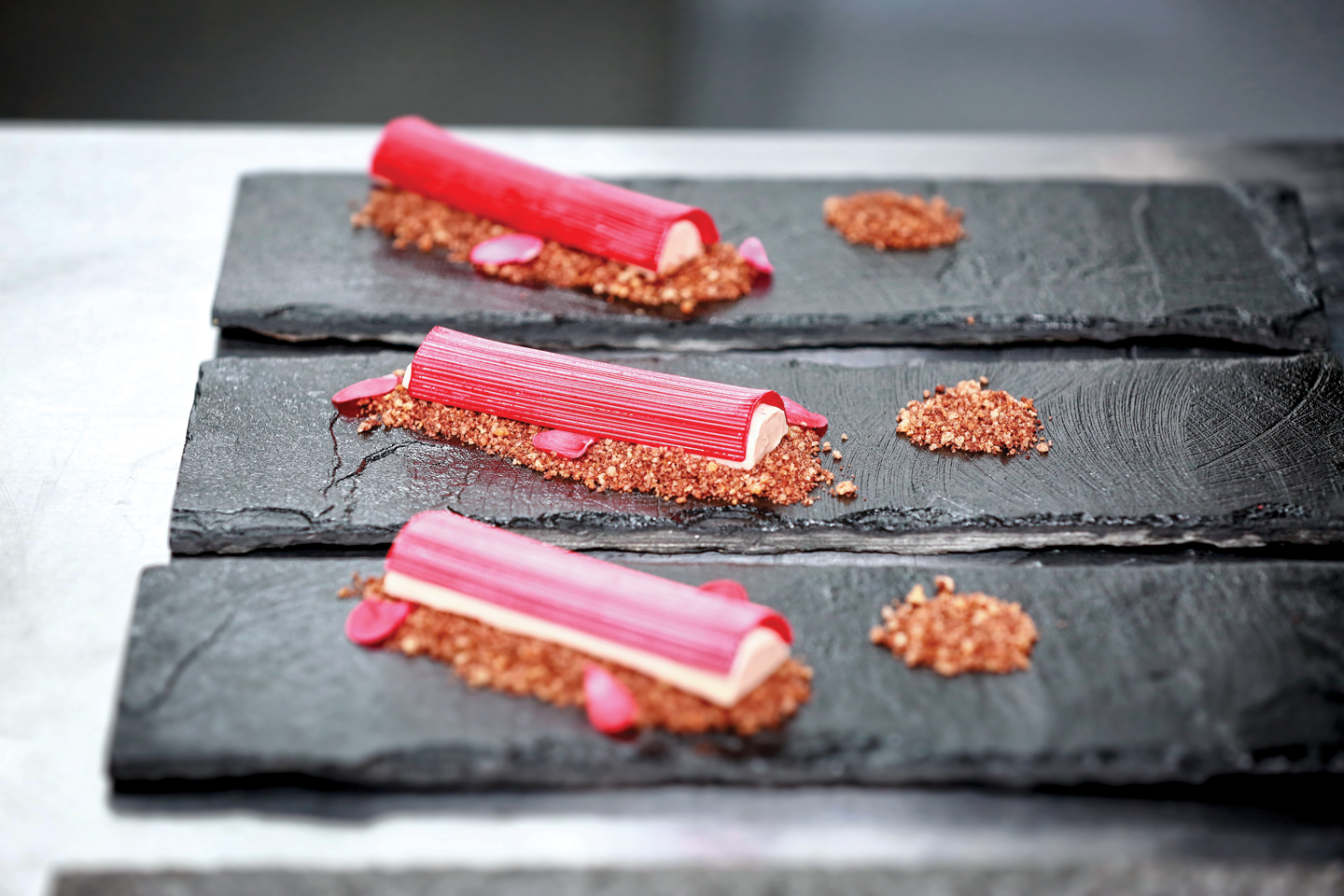* Visit República del Cacao´s website by clicking on the logo
From Ecuador to the world
In order to maximise the production of chocolate in Ecuador, we need “ to develop chocolatiers or pastry chefs who can compete with the other high level international professionals in the industry” explains Gonzalo Chiriboga Vela, Corporate Manager of República del Cacao Business to Consumer, referring to the 1st International Pastry and Chocolate Congress, organized by República del Cacao.
Participants in the Congress included high profile professionals such as Gustavo Saez, well known as the best pastry chef in Latin America; Ariel Penalva, República del Cacao chef for Argentina and the Carribean; and Natividad Toledo, República del Cacao chef for Mexico (specialist in sweets and candy). These experts in their fields shared their knowledge and experience with Ecuadorian chefs looking to hone their skills in this industry.
The renowned journalist and culinary critic, Spaniard Ignacio Medina, was also present at the Congress. He took advantage of his stay in the country to partake in experiences motivated by the desire to delve into the secrets of the fascinating world of fine aroma cacao. Ignacio has worked as a restaurant critic, has directed magazines and, globally, has expressed his opinion about the gastronomic landscape of the many places he has visited. “The critic, the journalist, does not dictate scientific norms; he works with emotions and opinions”, he explains.
¿How do you define fine aroma cacao? As a product with personality, it highlights the difference and the quality of the product, and that can put chocolate at the apex of the market. Chocolate is defined by its origin, and in this case, when the origin is a fine aroma cacao, it already has advanced at least 50% of the way. From there it will depend on what we do with it.
¿When you taste a chocolate, what are the nuances to which attention should be paid? I like to do it in parts: the first time you try the chocolate you will feel the more volatile, lighter aromas, such as flowers or fruits. When you return to taste that same chocolate those aromas no longer appear, replaced by the mid range flavors that are the nuts and the spices. The third time you try it you will notice the bitter notes of the chocolate. This can make the chocolate tasting a wonderful game, fantastic and fun. The tasting is part of your olfactory memory, and is related to the ability to store aromas and then be able to identify them.
What are the properties that define the Arriba Cacao used by República del Cacao?
The Arriba Cacao, when properly transformed into chocolate is a very serious product, elegant, with a lot of presence. It does not have those notes of fruit and acidity that you might find with White or Porcelain chocolate, but with a very high level of elegance and consistency.
Which Cacao product is your favorite?
I like them all very much, but there is one that stands out amongst the other bars. It is a white chocolate with cacao nibs (pieces of cacao grain that have been fermented, dried, toasted and then broken to remove the skin). It gives you mellow notes that usually do not appear at first. It is spectacular.
What would be the perfect complement for this chocolate?
I like to accompany the chocolates with spirits, for example, brandy, cognac, or malt whiskey; In general wood-aged liquors. Also with sweet rum, the older the better. Each will produce different flavors and combinations when mixed with chocolate. There are chocolates that can outshine any drink, or there are drinks that overcome the chocolate, as they are very alcoholic or sharp, so you have to look for and find the right combinations. This is like a game of balance between one product and another. It is a relationship of love, that’s why we call it marriage, harmony or an encounter. The marriage, in the end, is a relationship of love between the two products.
What typical Ecuadorian products could be enhanced when used with this chocolate?
Forcing combinations is never good. The incorporation of the chocolate into combinations with new products is a pending work, one that must be done by the young Ecuadorian chefs. Not everything is worth it in the kitchen, you have to see where the limit lies, and above all how we must treat the chocolate so that it can adapt to a certain combination. Not all chocolates can be used to accompany a meat, and not all can be part of an Andean stew. What are we looking for?
Who is the protagonist? If it is chocolate, everything else is left behind because it is always going to prevail; If the protagonist is the goose or the arracacha (a common Andean root vegetable), the chocolate becomes a mere companion. It has to contribute a hue, it has to complement the other ingredients, but it should not hide the naturalness of the product.
There are four flavors with which a chef can play: sour, sweet, salty and bitter …
When you drink an acidic wine, accompanied by a very acidic dish, the acidity of the two tends to accumulate leaving a remnant, which will then enhance bitter flavors. When you look for balance between two flavors, in reality what is sought is that they mix and bring new and more complex aromas and flavors out, generally more attractive and different ones. When we look for a complementary combination there is usually a sacrifice on both sides for the attainment of something new.
How do you get this right?
You have to know the products thoroughly and then dare to try. This is a constant trial and error process. Cacao can play a very important role in the kitchen, it depends on how you shade your flavors. You could use chocolate or crush the cacao and make an infusion with the skins, the possibilities in the kitchen are an open never ending discipline; the only condition being that the outcome is pleasant. In the 19th century, cacao was consolidated as Ecuador’s main export product and the country’s economy was built around it.
According to Gonzalo Chiriboga Vela, Ecuador produces 63% of the world’s finest cacao: Arriba Cacao. Thanks to this, República del Cacao currently has its products in 15 countries. “The cacao industry in Ecuador represents about $ 800 million, and is between the third and fourth largest agricultural sector. Less than 1% is transformed into chocolate at the national level, “he explains.
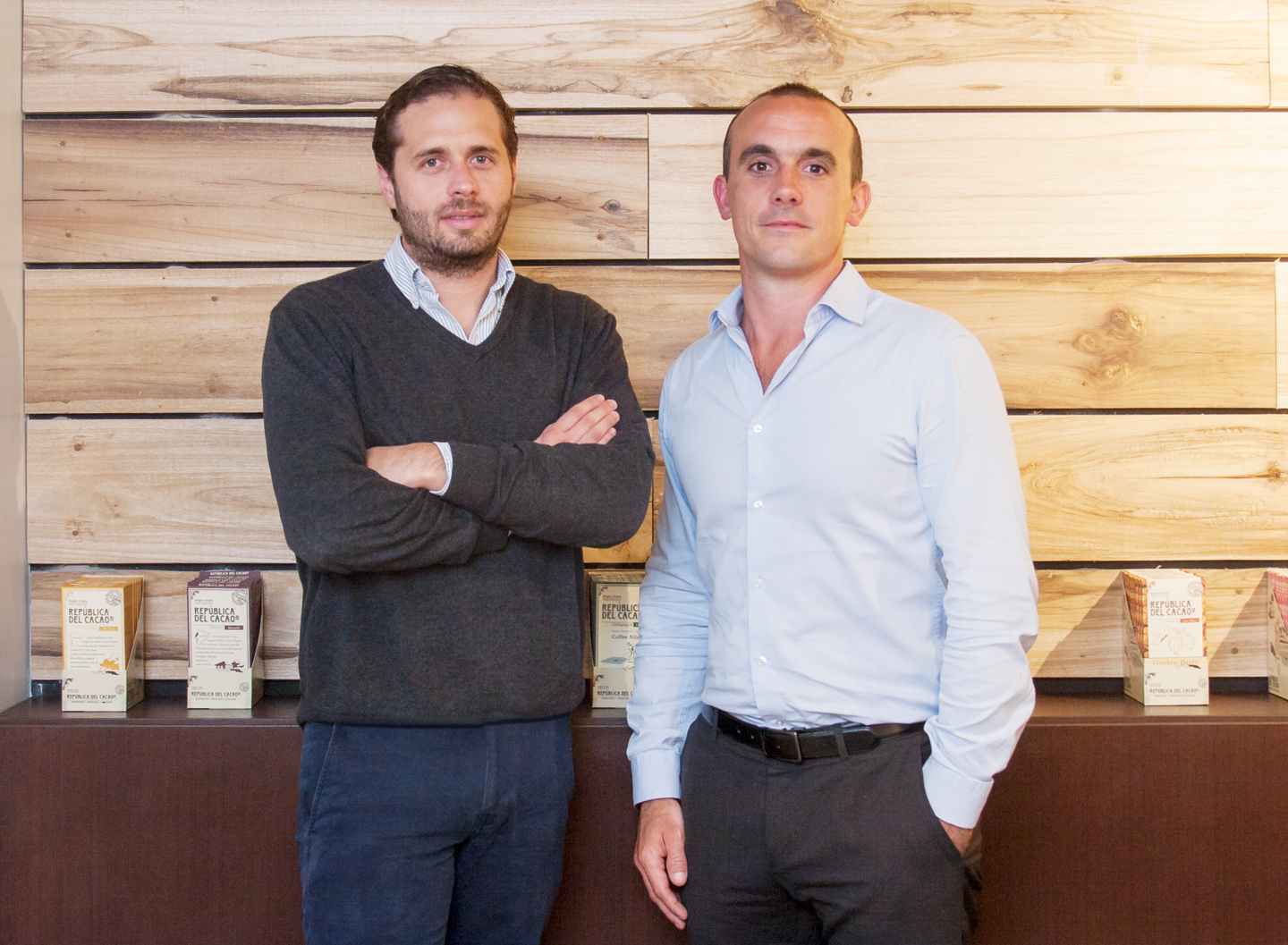
Arnaud Monmarche, Business to Business Manager of República del Cacao
Arnaud Monmarche, Business to Business Manager of the company, states that “the world of chocolate is a very competitive business, and demands a lot of know-how and excellence in production.” He concludes by mentioning that the objective is to cease to be just a producer and exporter of raw material, rather to become exporters of the final product: a chocolate of excellent quality whose raw material is fine aroma cacao, which is highly sought after worldwide.


